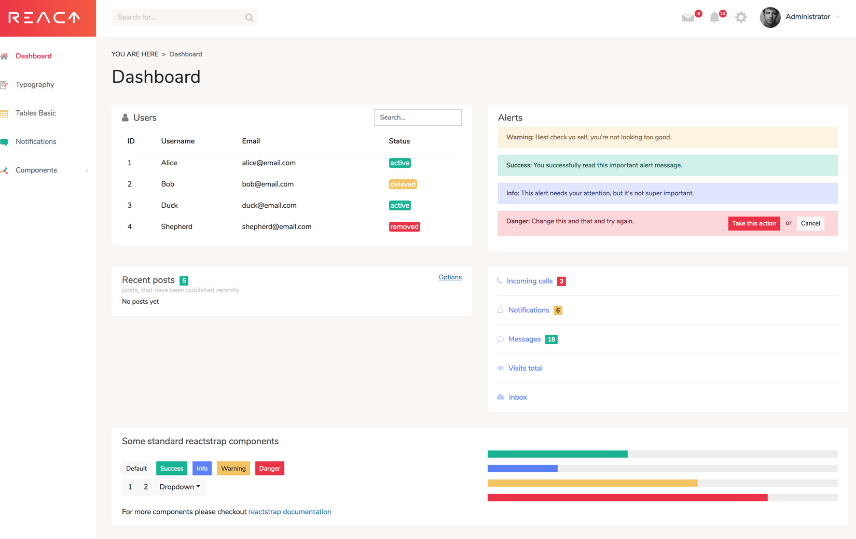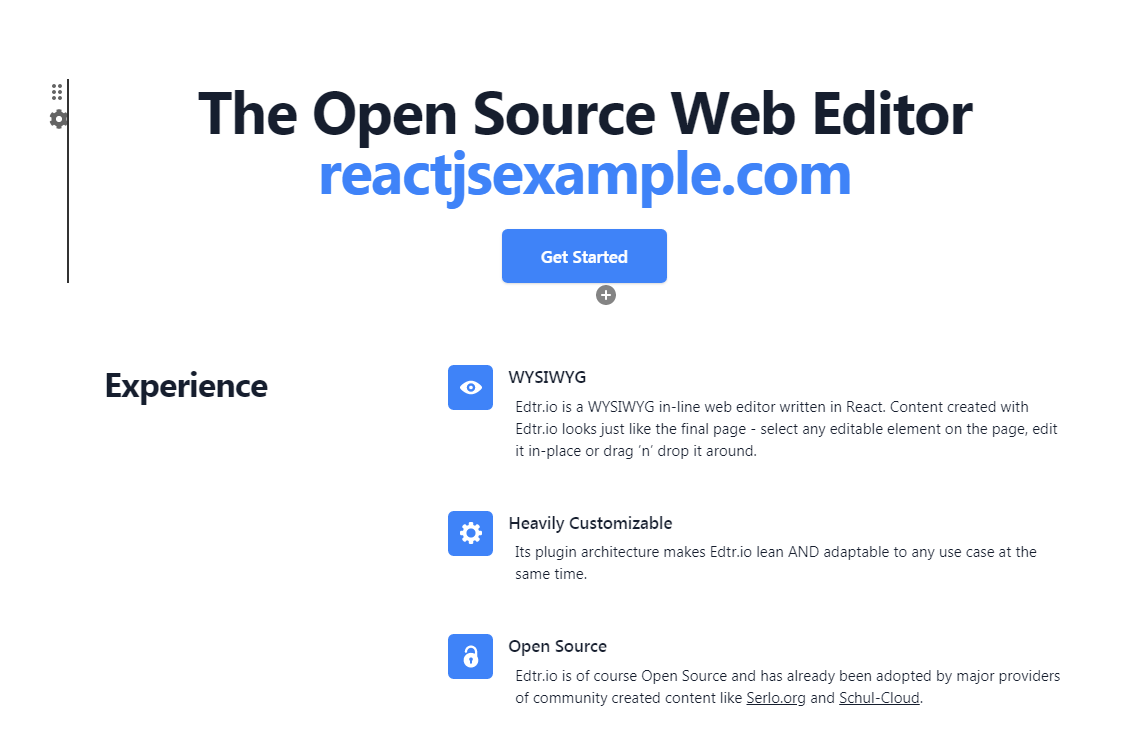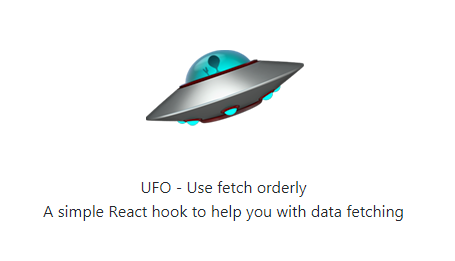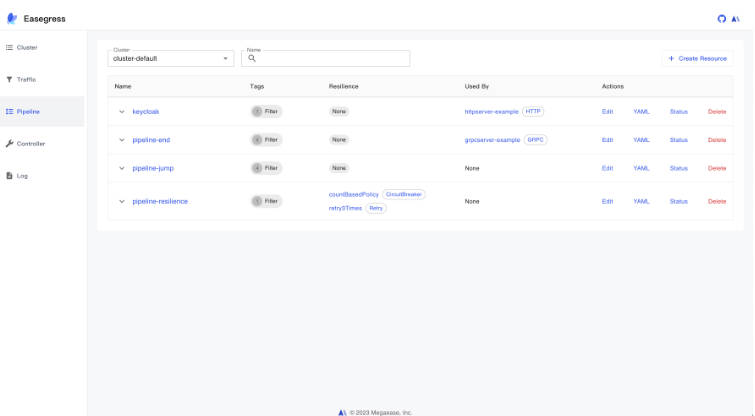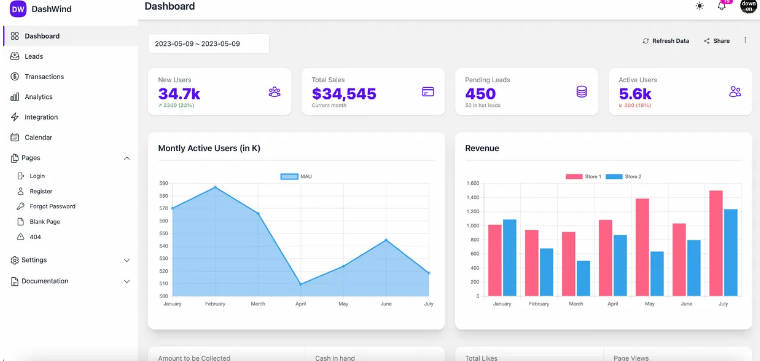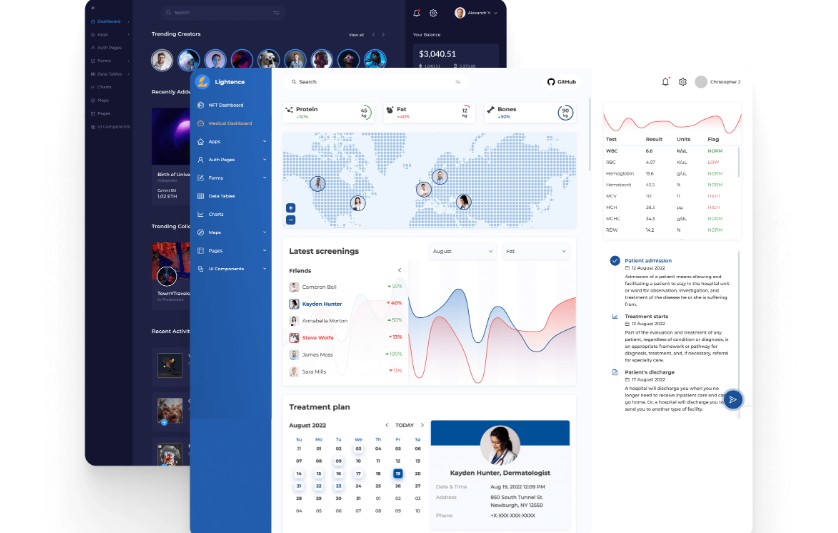React Dashboard — "isomorphic" admin dashboard template
built with React, Bootstrap, React Router, Redux and GraphQL based on Create React App and latest industry best practices.
Use following credentials: user/password.
Features
- React
- Mobile friendly layout (responsive)
- React Router
- Bootstrap3
- GraphQL
- Nodejs backend inegration
- Sass styles
- Stylish, clean, responsive layout
- Lots of utility css classes for rapid development (flatlogic css set)
- Authentication
- CRUD operations examples
Quick Start
1. Get the latest version
You can start by cloning the latest version of React Dashboard on your
local machine by running:
$ git clone -o react-dashboard -b master --single-branch \
https://github.com/flatlogic/react-dashboard.git MyApp
$ cd MyApp
2. Run yarn install
This will install both run-time project dependencies and developer tools listed
in package.json file.
3. Run yarn dev
This command will start the app with simultaneously with express server,
set up your database, start local server XAMPP, opensever, or other tool
to start database, connect to it in file
src > data > sequelize.js.
Also go to
src > data > schema.js
and enable mutation. This preparation
will enable to realize CRUD operations locally
4. How to create db
Create db. For instance name it "sequelize" and add posts table to it,
your table should have same structure as you can see on the screenshot

http://localhost:3000/ — Node.js server
http://localhost:3000/graphql — GraphQL server and IDE
Now you can open your web app in a browser, on mobile devices and start
hacking. Whenever you modify any of the source files inside the /src folder,
the module bundler (Webpack) will recompile the
app on the fly and refresh all the connected browsers.
